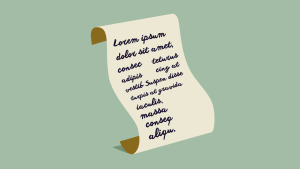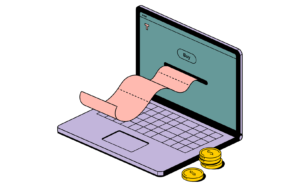If the current economic condition isn’t tough for you, remember that some of your clients may be suffering. That said, we all have clients who are slow to pay no matter how well they’re faring. If you’re new to freelancing, you’ll soon understand the importance of cashflow. On the other hand, you’ll also understand the importance of keeping customers happy. I hope you never find yourself in the position of chasing payment but, remember, you are in the right (assuming you supplied what was agreed). Here are five tips to help reduce the stress caused by non-paying clients…
1. Be Proactive and Have a Process
Even if you’re a one-person company, there’s no excuse for not having a clearly defined processes and policies for dealing with late payments. Chasing money is time-consuming; having a process in-place will help your sanity and profitability.2. Contact the Client Immediately
Contact the client directly on the day payment becomes overdue. Try not to use email — a telephone call or face-to-face meeting is far more effective. During your conversation:- Ask whether there have been any problems with the work you supplied.
- State you have not received payment and ask whether they had problems paying.
- Ask when the payment will be made and agree a date. If they don’t know, state that you will call the following day once they’ve had a chance to investigate.
3. Nudge the Client Harder
If you remain unpaid, contact the person directly responsible for paying invoices. This is fairly easy for larger companies — simply call the reception and ask. It’ll also give you a chance to build a relationship with another person in the company. In some cases, the organization may simply have a payment schedule which is different to yours. It’s a little more difficult for smaller or one-person companies, but keep persisting. They’ll soon be dreading the embarrassment of your regular calls. If payment is considerably delayed, write a formal letter stating a date when late fees and interest will start to accrue. Check the legal situation for your country; most have a statutory interest rates for overdue payments. US states vary between 6% and 10% per annum. It’s 8% in the UK.4. Accept the Inevitable
If negotiations break down, write a letter stating that the client is in breach of contract (verbal agreements are still legally-binding in most countries) and you have no choice but to withdraw your services. By all means, state that you will be instigating legal action on a specific date and they will be responsible for all debt recovery costs. But don’t make empty threats; be prepared to start legal proceedings on the understanding it may cost you more in time and money than the original payment — with no guarantee of success.5. What NOT to do…
Never complain about a non-paying client to others — especially on social networks. It’s not professional and is unlikely to result in a positive outcome. If you’ve delivered a web project where you’ve supplied the hosting, it’s tempting to flick the off switch or use a system such as CSS Killswitch to black-out their site. Be wary. While you may bathe in the warm glow of moralistic justification, it’s an antagonistic move which may ultimately end the relationship and won’t necessarily resolve the payment issue. In some cases, it may put you in breach of contract. If you want to use a technical solution, provide the client with a written warning. It’s even better if you can give the impression that the whole process is automated or beyond your control in some way. Alternatively, you could be a little more subtle. If a ‘bug’ caused, say, a security error message or shop payments to fail, the client may have no choice but to contact you. But I wouldn’t suggest you should ever be that sneaky…BONUS TIP: Prevention is Better Than Cure
In my next post we’ll discuss how you can avoid payment problems from the start. How did you deal with a non-paying client? Would you do the same again? Comments on this article are closed. Have a question about clients? Why not ask it on our forums?Frequently Asked Questions about Dealing with Non-Paying Clients
What are some effective strategies to prevent non-payment from clients?
To prevent non-payment from clients, it’s crucial to establish clear payment terms from the outset. This includes setting a payment deadline, specifying the accepted payment methods, and outlining potential late fees or interest charges for overdue payments. Additionally, regular communication with the client about their payment status can help prevent misunderstandings and non-payment.
How can I legally recover money from non-paying clients?
If a client refuses to pay, you have several legal options. You can send a formal demand letter outlining the amount owed and the deadline for payment. If this doesn’t work, you can hire a collection agency or take the client to small claims court. It’s important to keep all documentation related to the project and payment to support your case.
What should I include in a contract to protect myself from non-paying clients?
A well-drafted contract can protect you from non-paying clients. It should include clear payment terms, a detailed description of the services provided, and the consequences of non-payment. You may also want to include a clause that allows you to stop work or withhold services if payment is not received by a certain date.
How can I handle a dispute with a client over payment?
If a dispute arises over payment, it’s important to remain professional and open to negotiation. Try to understand the client’s perspective and work towards a mutually beneficial solution. If the dispute cannot be resolved, you may need to consider legal action.
Can I charge interest on late payments from clients?
Yes, you can charge interest on late payments, but this must be specified in your contract or payment terms. The rate of interest should be reasonable and in line with industry standards.
How can I encourage clients to pay on time?
Offering incentives for early or on-time payment can encourage clients to pay promptly. This could be a discount or a value-added service. Regular reminders and easy payment options can also help.
What are the potential consequences of non-payment for clients?
Non-payment can have serious consequences for clients, including damage to their credit rating, legal action, and loss of your services. It’s important to communicate these potential consequences to clients.
How can I handle non-payment in a long-term client relationship?
Handling non-payment in a long-term client relationship can be tricky. It’s important to communicate your concerns clearly and professionally, without damaging the relationship. Offering a payment plan or negotiating new payment terms may be a good solution.
Can I refuse to work with a client who has not paid?
Yes, if a client has not paid for previous work, you are within your rights to refuse to take on further work until payment is received. This should be communicated professionally and clearly.
How can I protect my business from the impact of non-paying clients?
To protect your business, it’s important to have a clear payment policy, a well-drafted contract, and a plan for dealing with non-payment. Regularly reviewing your accounts receivable and following up on overdue payments can also help.
Craig is a freelance UK web consultant who built his first page for IE2.0 in 1995. Since that time he's been advocating standards, accessibility, and best-practice HTML5 techniques. He's created enterprise specifications, websites and online applications for companies and organisations including the UK Parliament, the European Parliament, the Department of Energy & Climate Change, Microsoft, and more. He's written more than 1,000 articles for SitePoint and you can find him @craigbuckler.


